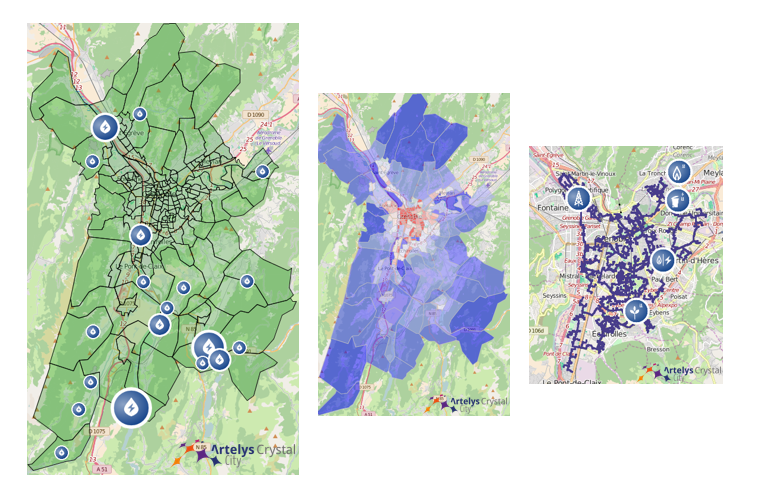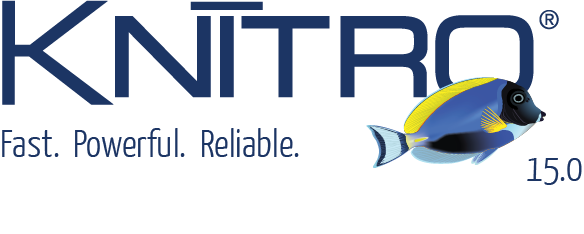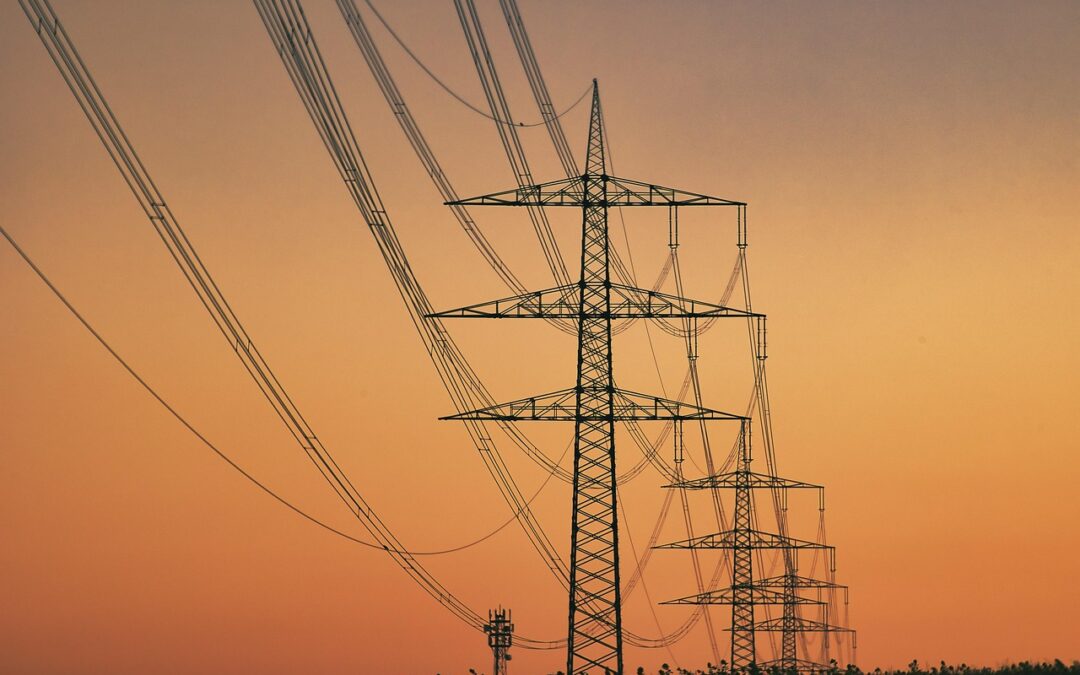Grenoble publishes its Energy Master Plan
The calculations in Artelys Crystal City allowed for a detailed (hourly time resolution over a whole year, at IRIS level) and complete (all sectors, uses, types of energy) simulation of the energy system of the territory. The study has been organized in three steps:
%
Greenhouse gases
%
Nitrogen oxides
%
Particles
%
Renewable energy and energy from waste
%
Energy consumption
The calculations in Artelys Crystal City allowed for a detailed (hourly time resolution over a whole year, at IRIS level) and complete (all sectors, uses, types of energy) simulation of the energy system of the territory. The study has been organized in three steps:
• a current state review of the consumption, production and networks
• the elaboration of a demand evolution scenario including concrete actions of energy sobriety and efficiency in all domains (engagement of citizens, renovations, transportation, etc.)
• the elaboration of an energy mix evolution scenario including the renewable energy generation technologies that are the most suitable to the different zones of the territory, their densities and their energy networks.
A particular attention has been devoted to the analysis of the district heating network in order to ensure it serves as one of the drivers of the energy transition with the aim of increasing the share of renewable energies and energies from waste and guaranteeing its profitability.
The scenarios have been compared by taking into account a great number of environmental and economic criteria (pollutant emmissions, renewable energy generation, investment costs, the energy bill in 2030, etc.).
This study has allowed to build a strong link between the energy actors of the territory and to place the metropolis at the heart of the energy transition, with the participation of local agencies, network operators, researchers, elected representatives and citizens.


Artelys Knitro 15.0: New Tools for Your Large-Scale Models
Artelys is pleased to announce the release of Knitro 15.0, which provides new algorithms and performance improvements to solve your large-scale optimisation problems, whether linear or non-linear, more quickly.

Artelys Introduces Future Sight: a Visualisation Tool Supporting the Energy Transition
As partner in the European Climate + Energy Modeling Forum (ECEMF) – a Horizon 2020 Europe project uniting research institutes and leading energy modellers in Europe – Artelys has contributed to modeling activities powered by Artelys Crystal Super Grid modelisation tool, and has led the development of a fully-fledged visualisation tool.

Supercharging Optimisation: How Artelys, FICO and NVIDIA cuOpt Join Efforts to Scale Up Energy System Optimisation
As energy system models continue to scale—reaching up to hundreds of millions of variables and constraints—traditional CPU-based optimisation solvers are hitting performance and memory bottlenecks. These increasingly complex models are essential for planning Europe’s energy transition, yet solving them within realistic timeframes has become a pressing challenge.

Artelys is powering SEleNe CC’s Common Grid Model (CGM) Service
Artelys provides maintenance and support services of the calculation module used to perform the European Merging Function (EMF) at SEleNe CC
subscribe to our newsletters
© ARTELYS • All rights reserved • Legal mentions